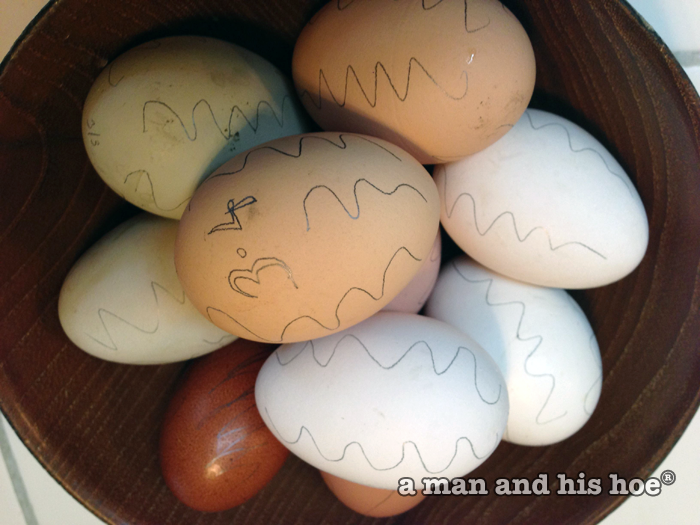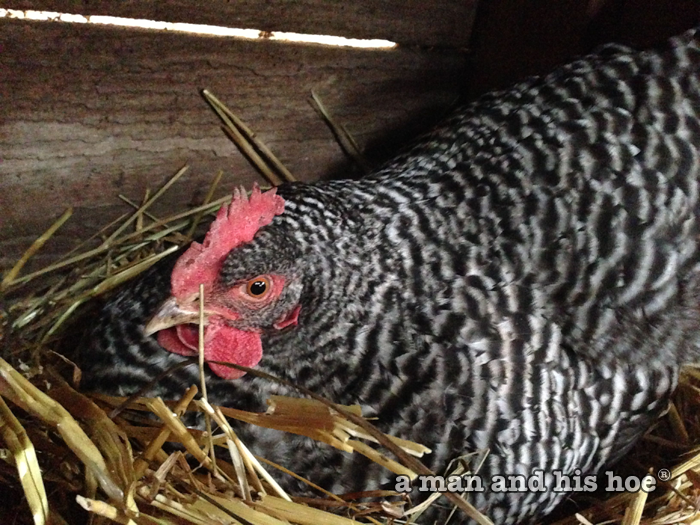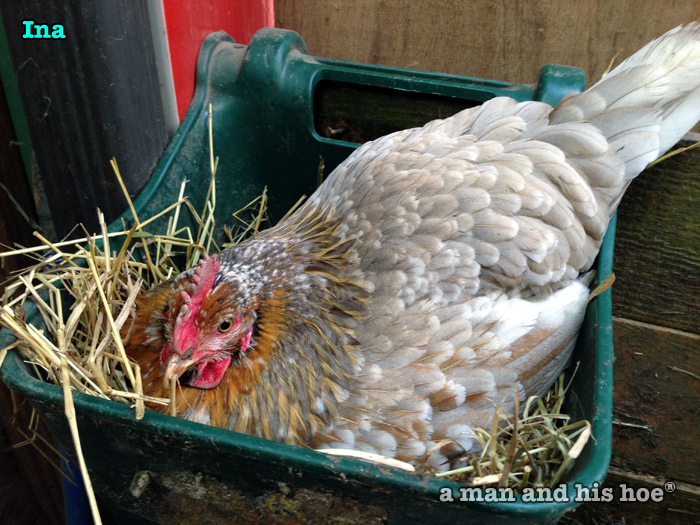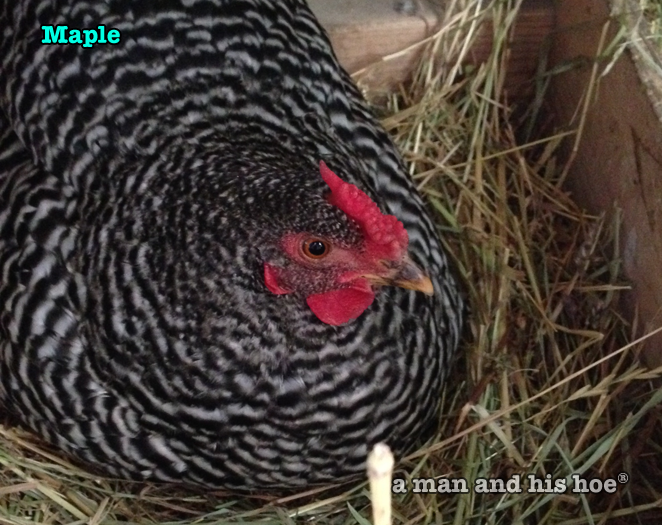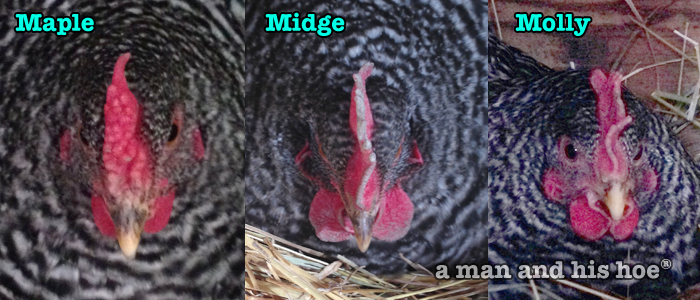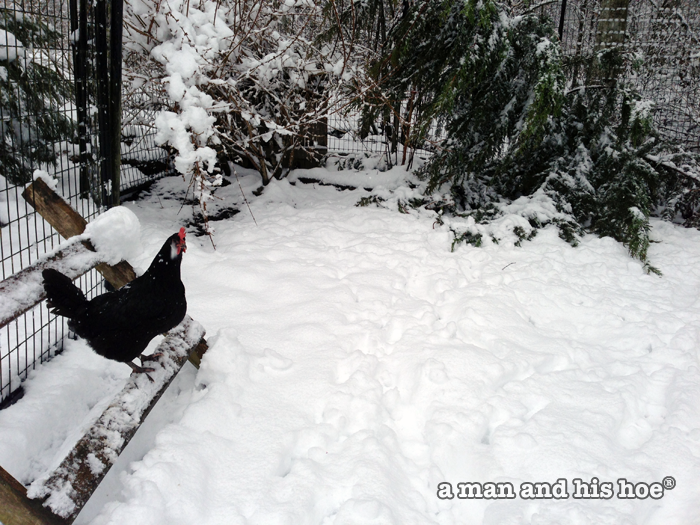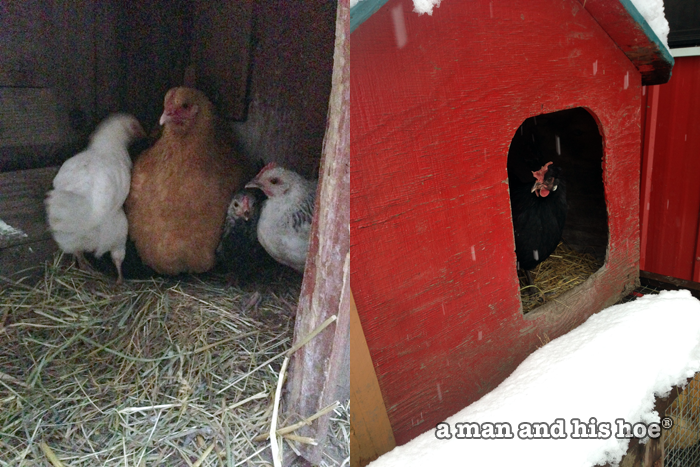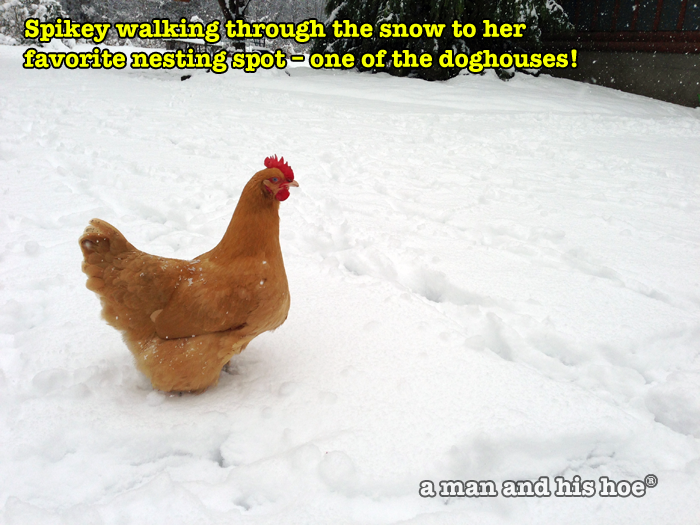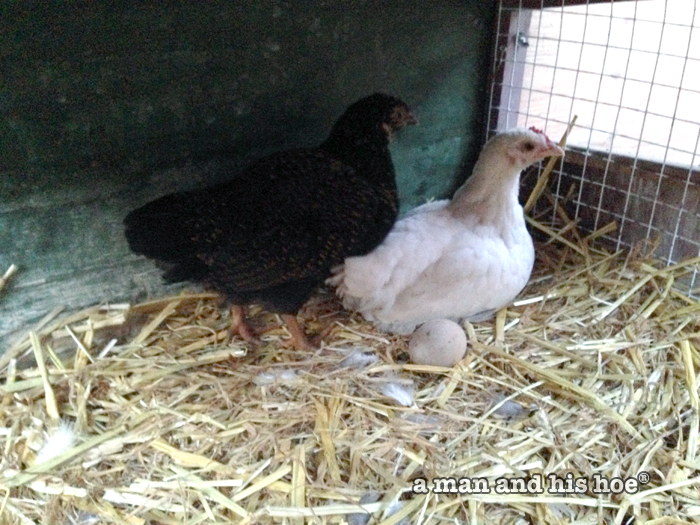
Five open blossoms is what it takes for the meteorologists in Japan to proclaim that the cherry blossoms have bloomed in a city. In each city, there is one tree which is declared the reference tree, and when five blossoms on that tree have opened, a declaration is made that the cherry trees have blossomed in that city. There are even reference trees in waiting, just in case the reference tree dies.
We had more than five open blossoms on our reference tree here at a man and his hoe®. So I declared yesterday that our cherry trees were in bloom. There are still many buds about to burst open. A few more sunny days, and our reference tree will be in full bloom.
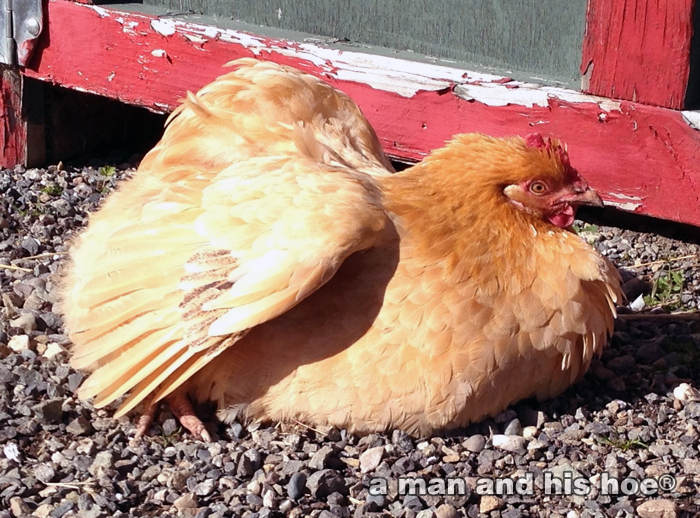
Speaking of sunshine, chickens love sunshine. They can spend hours sunning themselves in the warm sunshine. You’ll see them turning on their sides and lifting their wings to really air out.
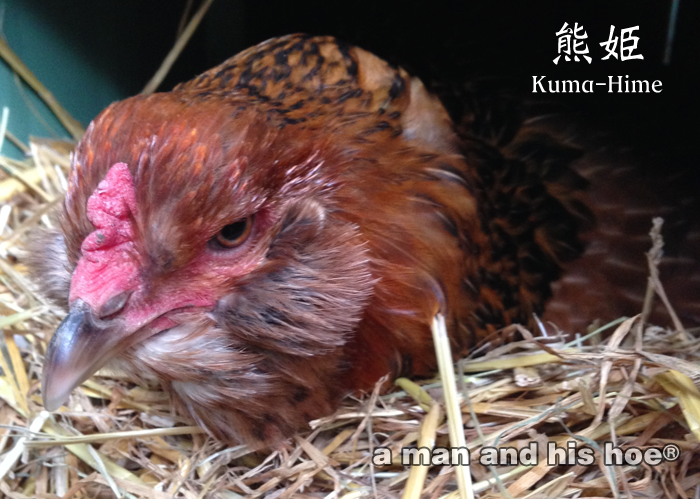
Dinosaur? Look closely into a chicken’s eyes, and it’s not difficult to see that birds are what dinosaurs evolved into. A chicken’s beak is a formidable weapon. It’s a good thing they are much smaller than us.
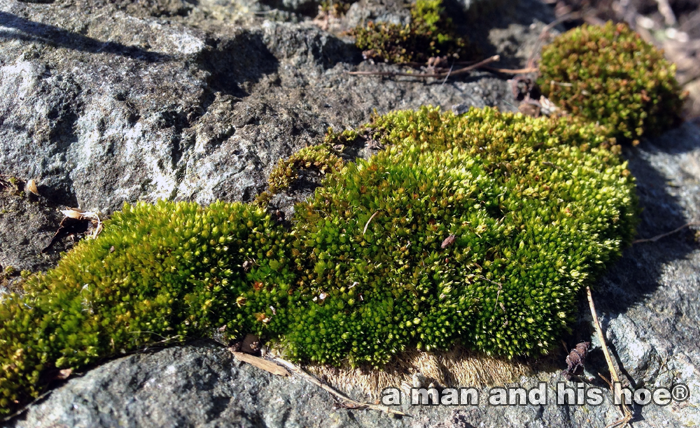
How long has that rock been there? The moss knows.
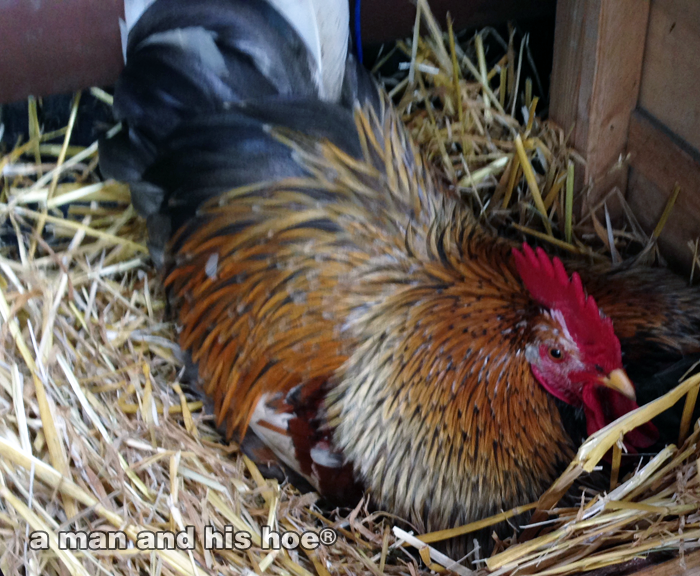
And what is this? A rooster sitting on a nest? I’ve read that roosters will sometimes sit on a nest to let hens know that they’ve found a good place to lay an egg. Sven spent more than an hour on this nest this morning. At times he even got up and clucked like a hen. He did entice one hen to sit on the nest, but she didn’t stay long enough to lay an egg. Maybe he’ll have better luck tomorrow.

